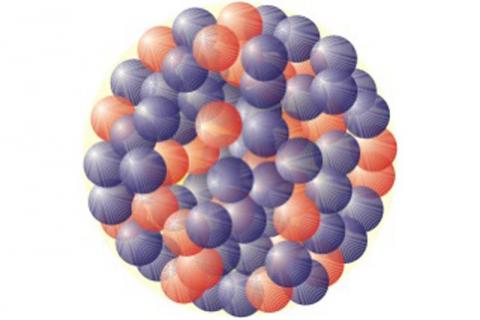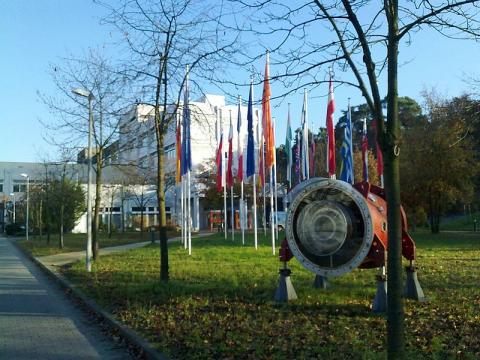

An international team of scientists working at the GSI laboratory in Germany have announced their success in producing, isolating, and studying the properties of an exotic isotope of tin. The lightest "natural" or stable tin is known as Sn-112, indicating 50 protons and 62 neutrons. The research team used facilities at the German rare-isotope laboratory to produce Sn-100 -- composed of 50 protons and 50 neutrons.
TRIUMF's Reiner Kruecken, now head of the Science Division, was heading the TU Munich team that led the project before he came to TRIUMF. Even after his move to Canada, continued to play a key role during the experiment's data analysis, interpretation, and publishing phase. He said, "Tin-100 is a very exotic doubly magic nucleus. Studying it required a combination of tremendous efforts from the accelerator, fragment separator, and detector teams --- all operating at peak performance. Theorists were also involved in order to provide large-scale shell-model calculations. It was quite a feat to study this nucleus that was once called the holy grail of nuclear physics. I am proud of the whole team and delighted with our results."
What is a magic nucleus? Is there really room for magic in physics? In the realm of understanding how protons and neutrons are configured inside the nucleus, there is! Or rather, scientists have observed that the configuration of protons and its relative stability depends on the number of protons. Similarly for the number of neutrons. These configurations were termed "magic" because they are more tightly bound together than their non-magic counterparts; the nuclear magic numbers are 2, 8, 20, 28, 50, 82, and 126. These configurations are often described in terms of shell models where the nucleons are stacked or confined to certain shells, in a concept similar to how electrons are modeled as being contained in shells orbiting around the nucleus.
In the case of Sn-100, both the number of protons and the number of neutrons are each "magic" (50), hence the term doubly-magic. Nickel-56 is another doubly-magic nucleus, as are helium-4, oxygen-16, and calcium-40. What makes Sn-100 more compelling for study is that it is close to the edge of stability, where the force between the constituent particles can no longer bind them into a nucleus. Researchers have wanted to study the behavious of Sn-100 and its decay properties to enhance their understanding of nuclear forces.
The team produced the exotic isotope using a technique known as projectile fragmentation: firing heavy nuclei at a target sheet of material. Upon impact, the nuclei shatter and "spray" forward, allowing physicists to hunt and sift through the debris. In this case, the team used a beam of xenon-124 atoms aimed at a sheet of beryllium. The approach is seemingly straightforward; but this kind of work requires a real attention to detail! The team used more than 1,000 trillion nuclei of xenon in order to produce, isolate, and study 259 atoms of Sn-100.
Using specially developed particle detectors, the researcers were able to measure the half-life and decay energy of Sn-100 and its decay products. Their experiments confirmed that Sn-100 has the fastest beta decay of all atomic nuclei, as previously predicted by theoretical physicists. The team measured the endpoint of the energy spectriumof the beta-decay spectrum as well as some of the gamma rays associated with transitions between states of the daughter nuclei. The work was just published in the scientific journal Nature and was judged sufficiently groundbreaking to attract a speciail companion column explaining the work by Dr. Daniel Bazin in the same issue.
Congratulations to the entire team; may the "magic" continue!
-- by T.I. Meyer, TRIUMF's Head of Strategic Planning & Communication
